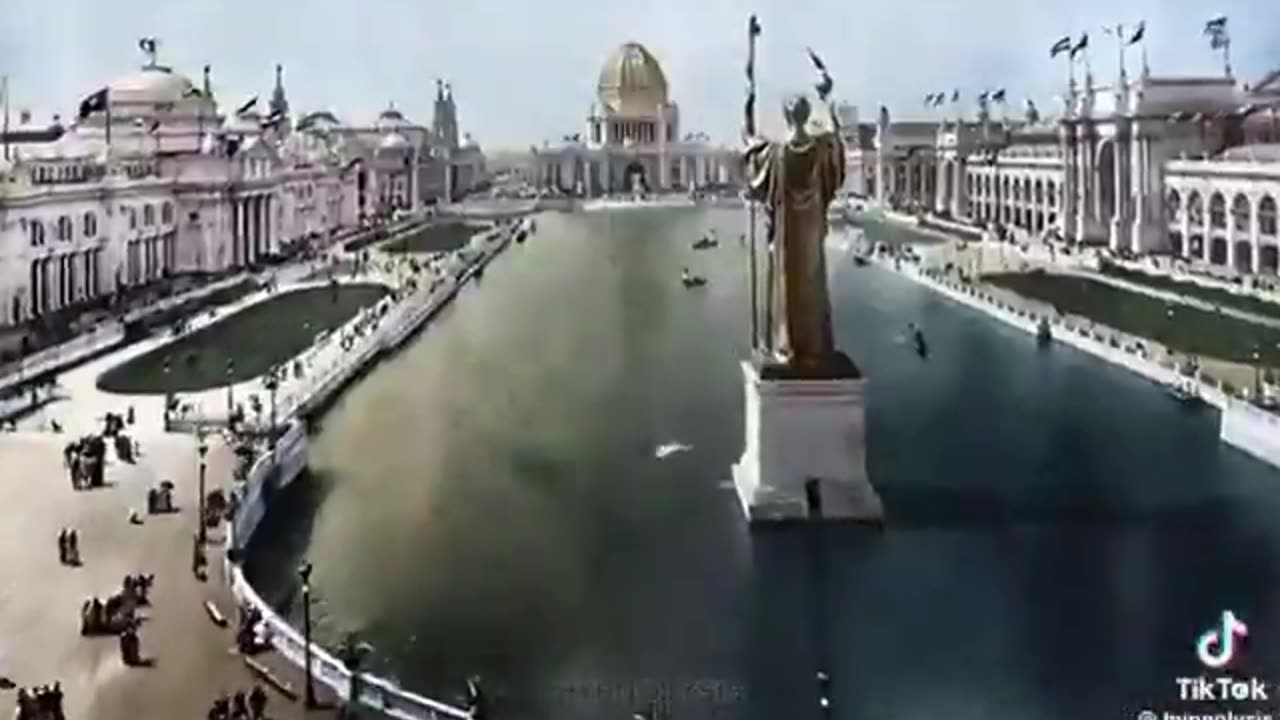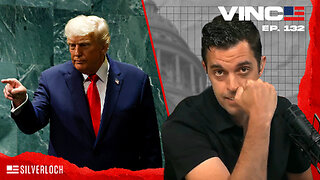Premium Only Content

1893 Chicago World’s Fair: A Glimpse of the Hidden Past
More than 130 years ago, Chicago, Illinois seemed too grand to be real.
This was the site of the 1893 World’s Fair, also known as the Columbian Exposition.
At the heart of this historic event rose a temporary metropolis called The White City — 600 acres filled with more than 200 monumental structures that defied imagination.
The Manufacturers and Liberal Arts Building alone spanned 32 acres — large enough to fit four Roman Colosseums inside and seat 300,000 people.
The fair’s most iconic image was the 65-foot golden Statue of the Republic, gleaming over a Venetian-style canal system where visitors glided in gondolas. Norway even sailed a full-size Viking ship across the Atlantic just to display it.
Nearly 27 million people attended — discovering foods we still know today: peanut butter, Hershey’s chocolate, Pabst Blue Ribbon, Cracker Jack, Juicy Fruit gum, and Vienna sausages.
It was also the dawn of electricity. More than 100,000 incandescent bulbs lit the night. Visitors saw the first practical electric car, the first electric kitchen with a dishwasher, and the birth of the modern amusement park with sideshows, international villages, and the very first Ferris Wheel — a 264-foot marvel carrying 2,160 people at once.
Even innovations like spray paint, whitewashing, souvenir merchandise, and an early version of the moving sidewalk appeared here.
But as you look deeper, a strange pattern emerges.
All over the world, World’s Fairs featured grand architecture and vast engineering projects — said to be built in impossibly short timelines with temporary materials, then destroyed right after.
In Chicago’s case, most of the fairgrounds were conveniently destroyed by fire. Yet a few permanent structures — like the Art Institute of Chicago and the Museum of Science and Industry — still stand today, revealing a craftsmanship far beyond what “temporary” construction should allow.
So we must ask:
• Why build the world’s largest, most ornate structures — only to tear them down after a few months?
• Why were some built permanently, while others were erased by fire?
• Were these fairs truly celebrations of progress, or covers to rewrite history?
Could the World’s Fairs have been a global operation — used to disguise or erase remnants of an advanced civilization that existed before the upheaval of the Civil War and the world wars?
The similarities across the fairs, the scale of construction, and the stories of sudden destruction suggest we are missing something.
Perhaps history isn’t what we’ve been told.
Perhaps much of it has been hidden — in plain sight.
-
 1:04
1:04
Canadian Citizens Journal
21 hours agoThis Is What Evil Looks Like in Canada
42 -
 1:12:10
1:12:10
Timcast
2 hours ago🚨BREAKING: ANTI ICE Terror Attack In Dallas, 2 Dead, Several Injured | Tim Pool
208K181 -
 2:04:25
2:04:25
Steven Crowder
5 hours agoBreaking: ICE Facility Shot in Dallas - Another Left-Wing Attack?
454K367 -

Mark Kaye
3 hours ago🔴 Jimmy Kimmel ROASTED For Fake Tears During Late Night Return
28.3K7 -
 1:07:28
1:07:28
Rebel News
2 hours agoLIVE | Fire at ostrich farm, RCMP & CFIA siege property, Rebels on the ground | Buffalo Roundtable
24.4K5 -
 1:02:08
1:02:08
The Rubin Report
4 hours agoCharlie Kirk’s Murder Has Officially Backfired
65.4K40 -
 1:04:04
1:04:04
The Drew Allen Show on DailyClout
2 hours ago"What the Kimmel Saga Has Taught Us About the Left"
17K2 -
 LIVE
LIVE
LFA TV
15 hours agoBREAKING NEWS: SHOOTER IN DALLAS! | WEDNESDAY 9/24/25
2,684 watching -
 1:00:09
1:00:09
VINCE
6 hours agoThe Globalists SABOTAGE Trump At The U.N.? | Episode 132 - 09/24/25
251K289 -
 DVR
DVR
Bannons War Room
7 months agoWarRoom Live
37.8M8.8K